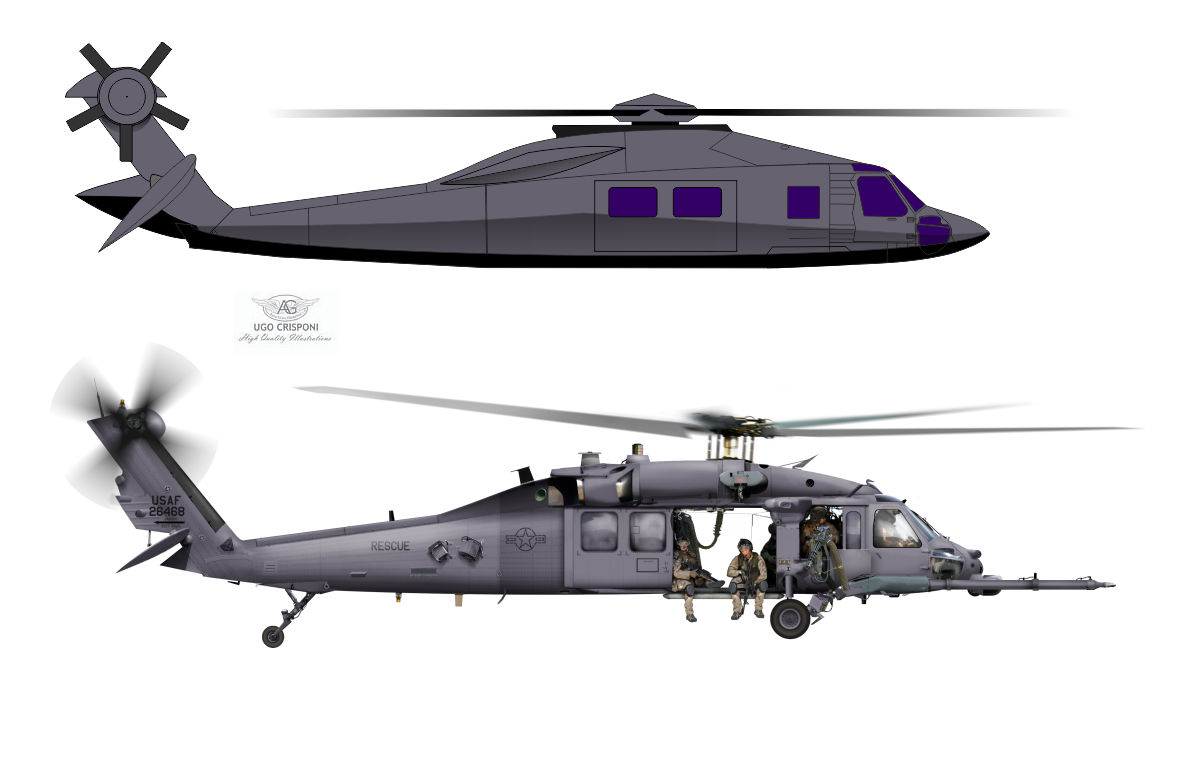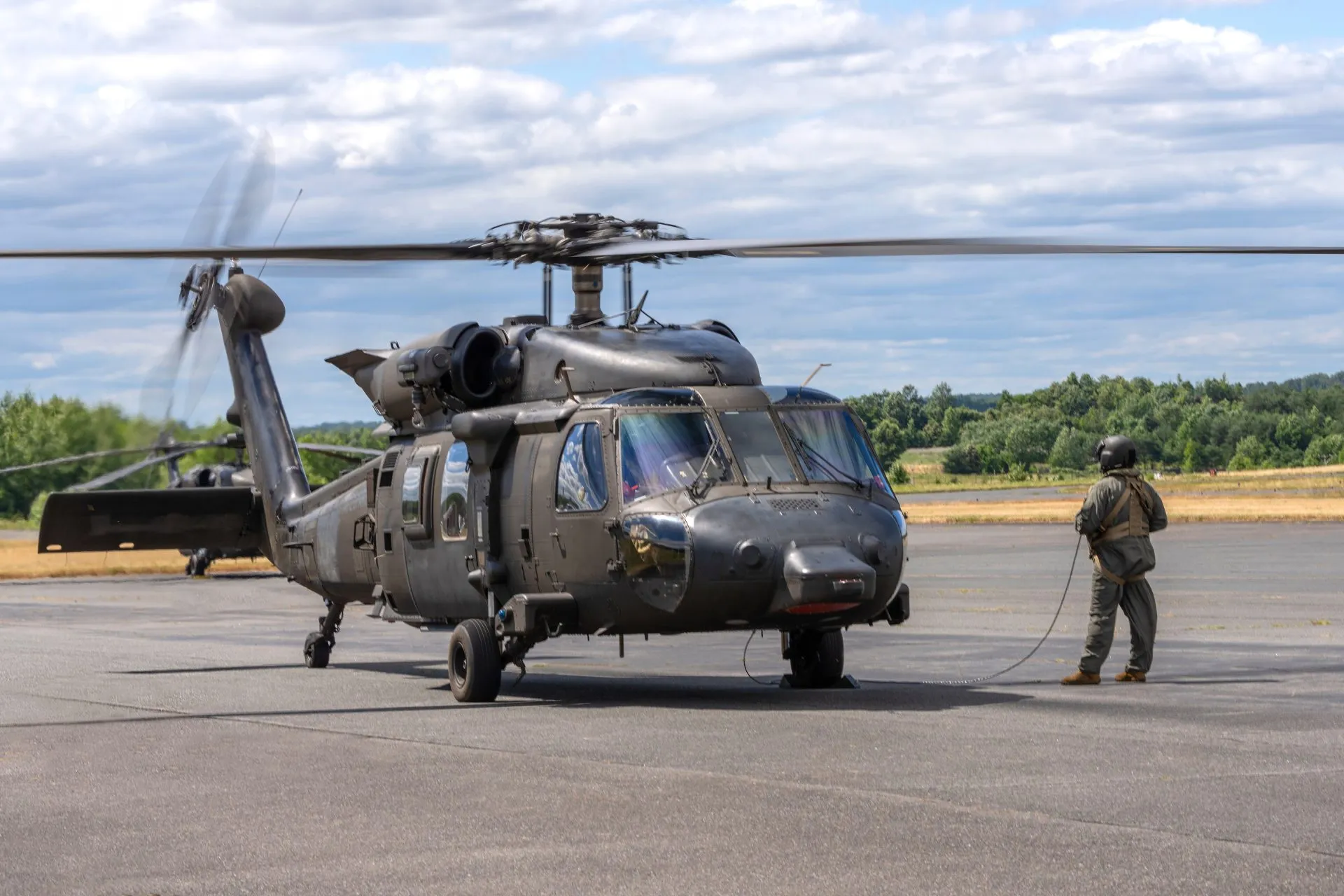Revealing the Power and Versatility of the Blackhawk Helicopter
The Blackhawk helicopter stands as a testament to engineering quality and armed forces advancement, substantially forming the landscape of contemporary aerial operations. Initially established in the late 1960s, this dual-engine airplane has actually advanced right into a diverse platform efficient in carrying out a range of objectives, from tactical army implementations to immediate medical evacuations. Its style incorporates sophisticated modern technology and materials, improving both performance and survivability. As we explore its history and functional abilities, one must think about just how the Blackhawk remains to affect modern fight approaches and altruistic initiatives alike. What does this mean for the future of army aeronautics?
Background of the Blackhawk
The background of the Blackhawk helicopter is marked by significant technical improvements and a calculated advancement in military aeronautics. Developed in the late 1960s by Sikorsky Airplane, the UH-60 Blackhawk was initially conceived to replace the older UH-1 Iroquois, commonly called the "Huey." The Blackhawk's very first flight took place in 1974, and it was officially presented to the U.S. Military in 1979.


This aircraft was designed to fulfill the demanding needs of modern war, concentrating on durability, speed, and convenience (Blackhawk Helicopter). Its capability to run in various settings, coupled with sophisticated avionics and design functions, promptly developed the Blackhawk as an important possession for armed forces operations worldwide
Throughout the 1980s and 1990s, the Blackhawk saw considerable use in different problems, including the Gulf Battle and humanitarian goals. The helicopter's flexibility permitted it to serve numerous duties, from army transport to medevac and logistical assistance. As modern technology progressed, so did the Blackhawk, resulting in various variations that accommodated certain objective needs. Today, the Blackhawk remains a famous icon of armed forces aviation, continuously improved to satisfy modern challenges.
Trick Features and Specs
Blackhawk helicopters are renowned for their design quality and functional convenience, boasting a series of essential functions and requirements that boost their effectiveness in numerous armed forces duties. Among one of the most substantial characteristics is their dual-engine configuration, usually powered by the T700-GE-701C engines, which supply remarkable reliability and performance. The helicopter has a maximum cruise speed of around 150 knots and a service ceiling of approximately 20,000 feet, enabling it to operate properly in diverse settings.
The Blackhawk's airframe is constructed from advanced composite materials and aluminum alloys, guaranteeing a robust structure while lessening weight. It features a fully articulated blades system that provides remarkable agility and security. The helicopter can suit approximately 11 fight troops or bring as much as 8,000 extra pounds of external cargo, making it very versatile for different goals.
In Addition, the Blackhawk is outfitted with advanced avionics and communication systems, boosting situational awareness and mission control. Its capability to operate in adverse weather, incorporated with its low acoustic signature, makes it a sneaky alternative for tactical procedures. Overall, these attributes add to the Blackhawk's online reputation as a foundation of modern armed forces aeronautics.
Versatile Operational Responsibilities
Distinguished for their engineering quality and advanced capacities, Blackhawk helicopters offer a multitude of operational functions within armed forces frameworks. Initially designed for troop transportation, their versatility has actually broadened, permitting them to carry out numerous objectives successfully.
Among the key functions of the Blackhawk is as an energy helicopter, helping with logistical assistance by moving materials and employees to and from remote places. In addition, they master medical emptying (MEDEVAC) operations, geared up with innovative medical tools and personnel to offer vital treatment in the area.
In battle circumstances, Blackhawks can operate as armed companion platforms, supporting ground forces by engaging enemy assets while making sure army security. Their ability for special operations makes them important; they can conduct reconnaissance objectives, workers recuperation, and direct activity raids, typically in high-threat atmospheres.
Furthermore, the Blackhawk's versatility enables it to sustain humanitarian missions and calamity feedback initiatives, providing aid and necessary services in times of dilemma. This broad range of functional functions shows the Blackhawk helicopter's exceptional adaptability, reaffirming its condition as a crucial asset in modern-day armed forces procedures worldwide.
Technical Developments
Numerous technological advancements contribute to the Blackhawk helicopter's extraordinary efficiency and versatility in diverse operational settings. Among one of the most substantial developments is its composite rotor blades, which enhance lift and ability to move while lowering weight and upkeep demands. The blades system uses sophisticated products that strengthen sturdiness and stand up to ecological deterioration, guaranteeing dependable operation in extreme problems.
Additionally, the Blackhawk is outfitted with a cutting edge avionics suite that integrates innovative navigation and interaction systems - Blackhawk Helicopter. This consists of GPS, radar, and multi-function screens that facilitate real-time situational understanding for pilots, adding to objective success under challenging scenarios
Furthermore, the helicopter's fly-by-wire control system enables for specific handling and enhanced responsiveness, giving pilots with enhanced control throughout facility maneuvers. The incorporation of sophisticated engine technology, such as the T700-GE-701C engine, more boosts performance, using boosted power output and gas performance.
Lastly, modular style concepts enable quick reconfiguration for various objectives, from troop transport to clinical emptying, making the Blackhawk a flexible property in altruistic and army procedures. These technological developments collectively make sure that the Blackhawk remains a formidable existence overhead.
Influence On Modern Warfare

Outfitted with sophisticated avionics and interaction systems, the Blackhawk makes it possible for seamless control amongst ground and air devices, making certain exact and prompt response to vibrant fight scenarios. Its adaptability enables quick implementation in varied environments, from urban setups to tough terrains, mirroring the complex nature of modern war.
Furthermore, the Blackhawk's premium speed and dexterity assist in fast insertion and view extraction of employees, minimizing exposure to opponent fire. Its ability to run in hostile problems, coupled with sophisticated defensive steps, enhances survivability and objective success rates.
As modern-day conflicts progressively rely upon joint operations and fast response, the Blackhawk helicopter continues to be at the forefront of armed forces approach, symbolizing the development of air flexibility and the important role of air power in accomplishing calculated objectives. Its influence on modern-day warfare remains to redefine the capabilities of militaries worldwide.

Conclusion
Finally, the Blackhawk helicopter exemplifies the junction of innovative design and functional adaptability, solidifying its status as a cornerstone of modern armed forces air travel. Its historical importance, remarkable attributes, and adaptability throughout different goal profiles underscore its crucial function in contemporary war. As technological developments remain to improve its capacities, the Blackhawk remains an essential asset for militaries around the world, showing unequaled click here for more efficiency in both fight and altruistic operations.
The Blackhawk helicopter stands as a testimony to design quality and military advancement, significantly forming the landscape of modern-day aerial procedures.The background of the Blackhawk helicopter is noted by substantial technical developments and a critical advancement in army aviation.Blackhawk helicopters are renowned for their engineering excellence and functional flexibility, boasting an array of vital attributes and requirements that improve their efficiency in various military duties.Many technological developments contribute to the Blackhawk helicopter's phenomenal efficiency and flexibility in varied operational atmospheres.In conclusion, the Blackhawk helicopter exemplifies the crossway of innovative design and operational flexibility, solidifying its standing as a keystone of modern-day army aeronautics.
Comments on “Discover the Blackhawk Helicopter's Duty in Search-and-Rescue and Disaster Relief Initiatives”